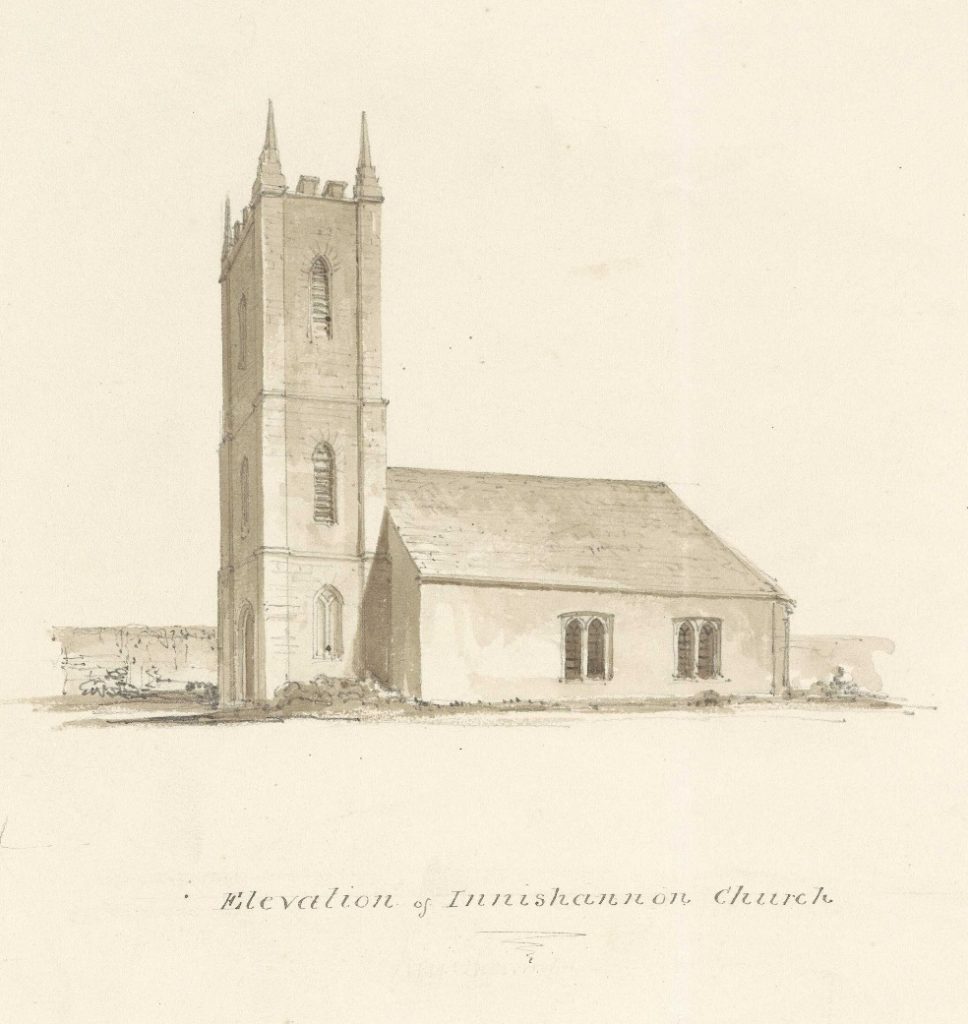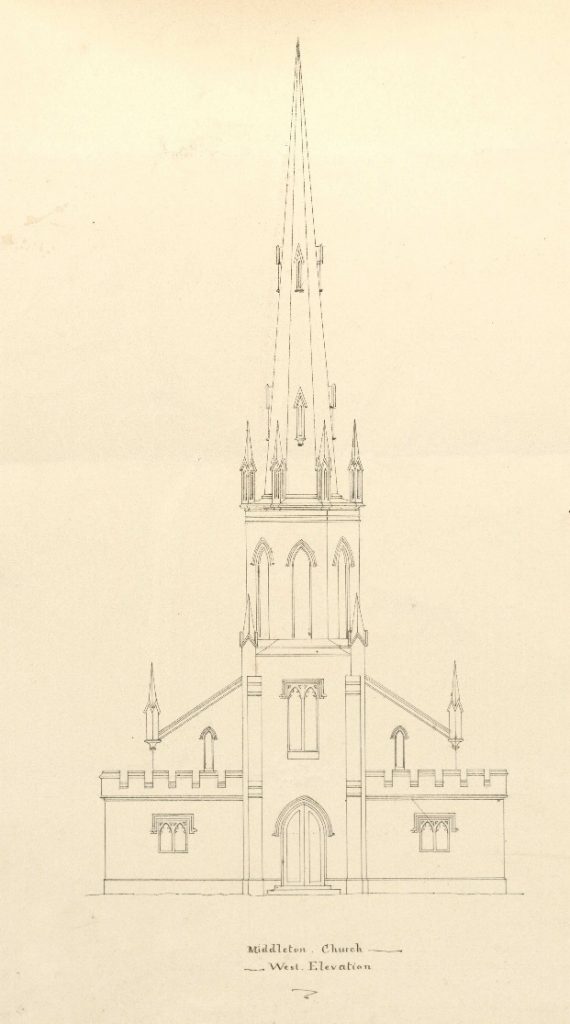Publication of early 19th-century architectural albums online
The project to digitize, catalogue and make available online the Church of Ireland’s collections of architectural drawings of churches housed in the Representative Church Body (RCB) Library has reached another significant landmark, with the completion of imaging ten albums of early 19th-century drawings of churches, amounting to some 1,500 drawings. All digital copies of these drawings which cover a total of 591 different church buildings have now been uploaded to the searchable database at https://archdrawing.ireland.anglican.org/items and are now freely available for viewing and searching.
Sustained commitment from the Church’s central funds and specific donations from particular dioceses has enabled this huge project – which originally commenced in 2011 – to continue apace, with the result that a total of 8,615 drawings for some 1,558 church buildings, and a further 73 glebe houses and rectories are now available online. The work has been assiduously carried out for the RCB by architectural historian Dr Michael O’Neill who additionally has put together a specific online exhibit focusing on the album content.
The Pain and Welland albums – as they are known in-house among Library staff – comprise some eight albums of survey drawings and two albums of working drawings commissioned by the Board of First Fruits and Ecclesiastical Commissioners of Ireland. In historical terms they collectively can be regarded as part of the inventory work of the newly established Ecclesiastical Commissioners in 1833 getting to grips with its role – taking over from the Board of First Fruits in church building and repairs.

The ten albums, or rather eight of the ten (the final two contain proposals and working drawings), record the result of frenetic building activity by the Board of First Fruits (founded in 1711) in the period 1784 to c.1827, when the Board’s funds were very significantly increased by parliamentary grants. During the years 1808 to 1821 government funding was enormous and restrictions on church rebuilding were lifted. The Board also provided significant loans for the building of glebe houses.
The six earliest albums contain drawings by the architect of the Board of First Fruits James Pain (c. 1779-1877) and record the churches in the dioceses of Cashel and Emly (44 churches), Cloyne (65 churches), Cork and Ross (78 churches), Killaloe and Kilfenora (59 churches), Limerick and Ardfert (72 churches), and Waterford and Lismore (39 churches), totalling 357 churches. Pain generally provided a ground plan, showing the internal arrangements, an external elevation, and a site plan for each church.
The four later albums contain the drawings by Joseph Welland (1798-1860). Welland was born in Midleton, Co. Cork, and trained in the office of John Bowden, the first architect employed by the Board of First Fruits. When Bowden died in 1822, Welland inherited some at least of his practice and also became provincial architect for the province of Tuam. Two of his albums cover the ecclesiastical province of Tuam and part of the province of Armagh. They cover the dioceses of Killala (11 churches), Achonry (nine churches), Ardagh (11 churches), Elphin (28 churches), Kilmore (28 churches), Meath (64 churches), Tuam (26 churches), Clonfert (10 churches), and Kilmacduagh (four churches). Ardagh, Kilmore and Meath were in Armagh province, the other dioceses were in Tuam province.

Welland devoted a single page to each church, providing a ground plan with the internal arrangements rendered in detail and a site plan. Unfortunately, he did not provide elevations and, as a result, the massing of the buildings cannot be as easily read as with slightly earlier Pain inventories.
These drawings are of First Fruit churches – rectangular buildings with a west tower – which remain iconic features of the Irish landscape. Often dramatically located, sometimes in seemingly isolated places, they generally replaced medieval churches on the same sites. They mark medieval settlement patterns in what is the palimpsest of the Irish landscape which is now largely overlain with the 18th-century field system. The Church of Ireland inherited the apparatus of the medieval Irish Church, and some of the sites are from an even earlier dispensation.
Collectively the albums provide a key source for understanding the major First Fruits church building phase (1780s to 1820s), many of which were subsequently repaired, rebuilt or extended from the later 1830s to the late 1860s. The inventory work that they capture actually coincided with the Ordnance Survey mapping project of the whole country, which definitively mapped the civil (Church of Ireland) parishes, a project not undertaken since the 17th-century Down Survey. As with the Ordnance Survey Letters (John O’Donovan et al), and the recording of antiquities by George Petrie and George Victor Du Noyer, Pain and Welland also knowingly recorded quite a significant number of medieval churches, still then in use. Inevitably, many of these too were replaced in the ensuing decades.
The RCB Library is most grateful to Dr O’Neill for his painstaking and enthusiastic work for over eight years to make sense of the Church of Ireland’s immensely rich architectural collections and ensure they can be appreciated by a worldwide audience.